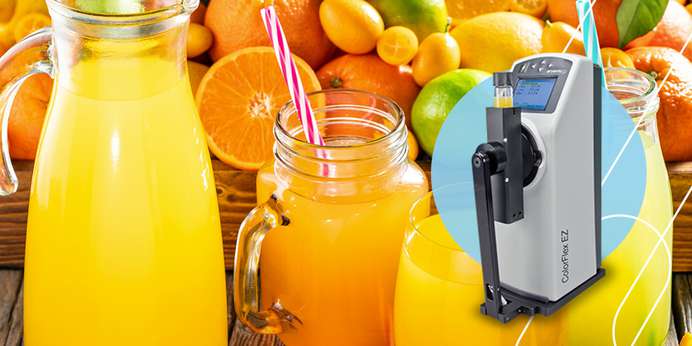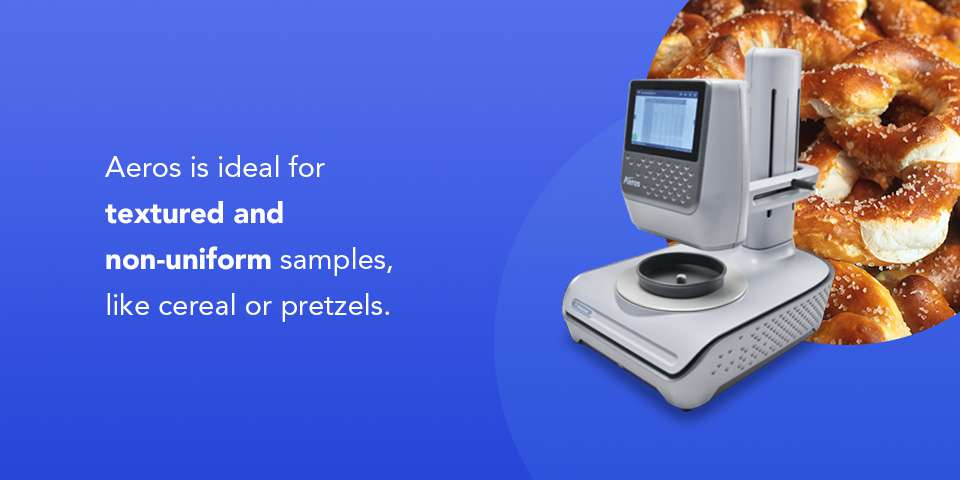
Color measurement and spectrophotometry support the food industry in several ways. Keep reading to learn how important these processes are to this industry and what solutions you can integrate for your food products.

Color measurement and spectrophotometry support the food industry in several ways. Keep reading to learn how important these processes are to this industry and what solutions you can integrate for your food products.
Food color measurement is the process of using equipment to quantify food product colors. Color measurement by spectrophotometer allows food producers and retailers to understand food quality and meet standards. This process is necessary because the human eye is subjective, and everyone perceives color differently.
A spectrophotometer will measure transmission or reflection, depending on the model and what food sample you are working with. Spectrophotometers shine light into sample chambers and analyze how your sample interacts with the light. Reflection data tells companies how much light your food reflects, helping you identify the exact hue of your sample for more specified results. This measurement option is excellent for opaque and translucent foods and materials.
Alternatively, transmission is the amount of light that passes through a sample. Sample trays will have a sensitive receptor at the bottom to measure this data. This option is better for translucent and transparent foods. Especially when working with liquids, transmission data can be crucial.
Food color measurement works with various materials at every stage of production. Producers often measure ingredients such as sugar and oil to ensure they are safe for food products. Food undergoes several rounds of testing at various stages, so manufacturers can ensure it is ready for the marketplace.
Color measurement is an essential process in the food industry. Color measurement processes and data can assure companies and customers in many ways, including:
The food industry needs to ensure health and safety when selling consumer products. Color measurement can allow companies to understand how well their food products meet their health, safety, and branding standards.
Companies manufacturing and handling food products can use many color measurement methods for measuring food color. HunterLab has several spectrophotometer models that can support different food types and consistencies, allowing your company to find a solution that best supports your products.
Aeros is ideal for textured and non-uniform samples, like cereal or pretzels. Aeros supports this function with its no-contact sensor and auto-height positioning sensor, allowing it to measure the color of textured surfaces for reliable and accurate data. This model sports the largest rotating platform in the industry, so you can measure 27.5 square inches in five seconds.

You can reduce learning time with Aeros's simple interface — you can operate it with one touch. For increased data sharing, it has USB and Ethernet ports. You can upload and share your data regardless of how you use it.
The ColorFlex EZ measures solid and liquid samples as the human eye perceives them with its 45°/0° design, so you can deliver better results that match your customers' expectations. It has 250 setups for more streamlined processes and storage for 2,000 product standards and tolerances, so you can pass products more efficiently.
You can further specify this equipment's functions with its various models designed for different food measurements, such as:
The ColorFlex EZ spectrophotometer is compact, allowing it to fit seamlessly into your existing tabletop spaces. It comes prepared with HunterLab's Easy Match Quality Control (QC) software and connects to printers and PCs.
For a portable color measurement solution, the MiniScan EZ is a powerful spectrophotometer you can operate with one hand. Its large screen is easy to read for increased useability. You can access all standard color scales and indices, and it can store 100 sample standards.
Vista measures transmission for transparent liquids and solids, like oils. This data can help determine product purity, which is essential for many product ingredients. Because it functions for many crucial liquid samples, its compartment is spill-resistant.
This spectrophotometer is excellent at detecting contamination in samples, making it vital when you want to ensure safety and quality. For data sharing, you can print, email, and stream information from Vista.
HunterLab is a leader in color measurement solutions with over 65 years of experience. Our spectrophotometers offer consistent and accurate results your color measurement teams can rely on for increased quality control. Technical integration and simplified processes make HunterLab equipment easy to use and implement into your spaces.
Contact HunterLab today and discover how our equipment can benefit your food production processes.
Mr. Philips has spent the last 30 years in product development and management, technical sales, marketing, and business development in several industries. Today, he is the global market development manager for HunterLab, focused on understanding customer needs, providing appropriate solutions and education, and helping to solve customer color challenges across these industries and cultures.LinkedIn